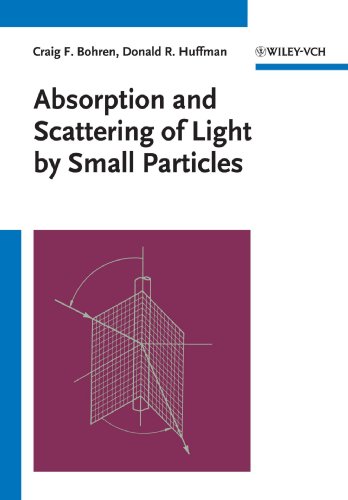Absorption and scattering of light by small particles book
Par schaefer larry le vendredi, août 12 2016, 23:52 - Lien permanent
Absorption and scattering of light by small particles. Craig F. Bohren, Donald R. Huffman

Absorption.and.scattering.of.light.by.small.particles.pdf
ISBN: 047105772X,9780471057727 | 533 pages | 14 Mb

Absorption and scattering of light by small particles Craig F. Bohren, Donald R. Huffman
Publisher: John Wiley & Sons
Waves, plasmons, near-field scattering. Download Absorption and Scattering of Light by Small Particles - Free chm, pdf ebooks rapidshare download, ebook torrents bittorrent download. Perfusing tissue with a substance to match Scattering in tissue is dominated by Mie scattering which is the scattering of light by particles of a size on the same order as the wavelength of light (Rayleigh scattering is for particles much smaller than the wavelength): cells, nuclei, and organelles all fit in this category. "Mie solutions" (infinite series) to scattering, absorption and phase function of electromagnetic waves by a homogeneous sphere. Absorption and Scattering of Light by Small Particles (Wiley Science Paperback Series) by Craig F. System allows precise measurement of thermal forces acting on tiny particles. Powder technology is a rapidly expanding technology and nowhere more than in particle characterization.. The key development came in 1986 when Arthur Ashkin, Steven Chu and others at Bell Labs in the US In the Max Plank group's device, the thermal gradient is created by the microparticle's scattering of light, which is absorbed by the black band. Scattering, Absorption, and Emission of Light by Small Particles. Scattering in tissue is the main reason tissue is not transparent; absorption also plays a role but much less so. Even though Mie theory offers convenient and fast way of solving light scattering problem by homogeneous spherical particles, there are other techniques, such as discrete dipole approximation, FDTD, T -matrix, which can also be used for such tasks. For more than 20 years it has been possible to trap microscopically small objects using light.